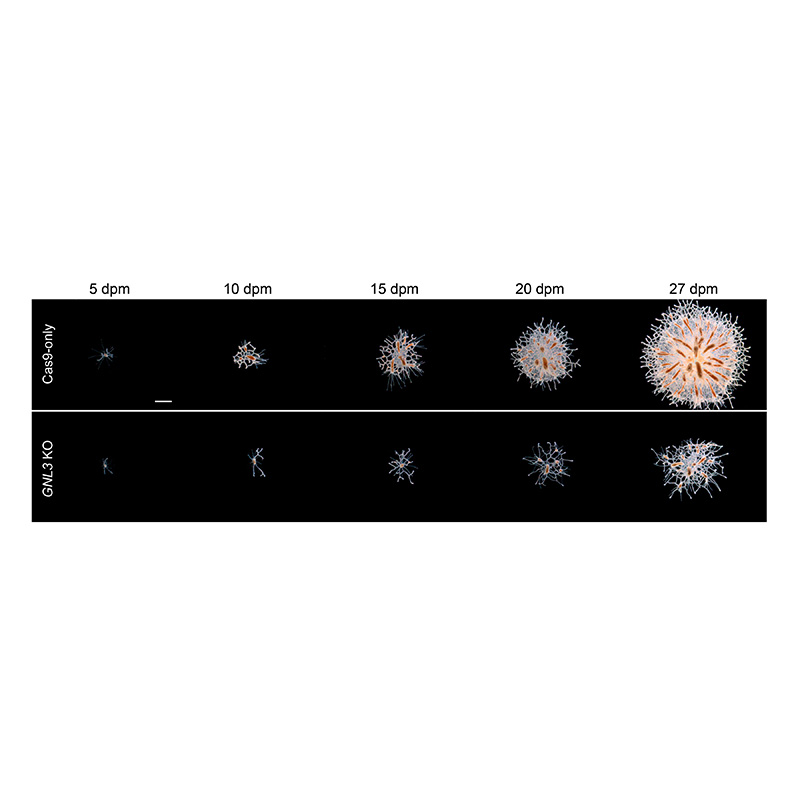 The Whitney Laboratory for Marine Bioscience
The Whitney Laboratory for Marine Bioscience

Congratulations to Dr. Gonzalo Quiroga-Artigas, for his recently published paper with Dr. Danielle de Jong and Dr. Christine Schnitzler in Open Biology – “GNL3 is an evolutionarily conserved stem cell gene influencing cell proliferation, animal growth and regeneration in the hydrozoan Hydractinia”
https://doi.org/10.1098/rsob.220120
This paper is the first in depth study of the GNL3 gene in any cnidarian. The team used genetic approaches to disrupt the function of this gene and study the effects on the animal, showing that it is involved in many important processes including growth and regeneration.
Nucleostemin (NS) is a vertebrate gene preferentially expressed in stem and cancer cells, which acts to regulate cell cycle progression, genome stability and ribosome biogenesis. NS and its paralogous gene, GNL3-like (GNL3 L), arose in the vertebrate clade after a duplication event from their orthologous gene, G protein Nucleolar 3 (GNL3). Research on invertebrate GNL3, however, has been limited. To gain a greater understanding of the evolution and functions of the GNL3 gene, we have performed studies in the hydrozoan cnidarian Hydractinia symbiolongicarpus, a colonial hydroid that continuously generates pluripotent stem cells throughout its life cycle and presents impressive regenerative abilities. We show that Hydractinia GNL3 is expressed in stem and germline cells. The knockdown of GNL3 reduces the number of mitotic and S-phase cells in Hydractinia larvae of different ages. Genome editing of Hydractinia GNL3 via CRISPR/Cas9 resulted in colonies with reduced growth rates, polyps with impaired regeneration capabilities, gonadal morphological defects, and low sperm motility. Collectively, our study shows that GNL3 is an evolutionarily conserved stem cell and germline gene involved in cell proliferation, animal growth, regeneration and sexual reproduction in Hydractinia, and sheds new light into the evolution of GNL3 and of stem cell systems.
Just in time for #cnidofest2022, our new paper on the evolution and function of conserved stem cell gene #GNL3 in #Hydractinia is out in #OpenBiology @RSocPublishing: https://t.co/duE4YRWkjy
— Dr. Christy Schnitzler (@christyschnitz) September 7, 2022